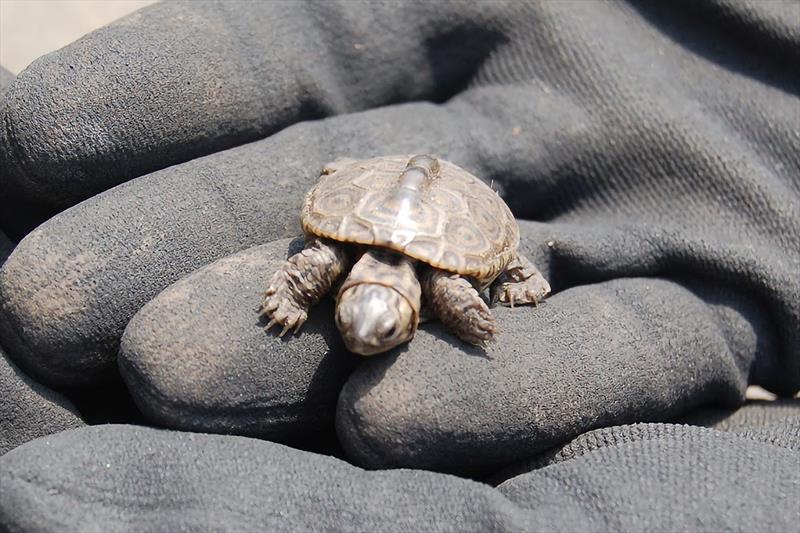
Gulf Spill Restoration: Two years after settlement
by Gulf Spill Restoration 28 Apr 2018 20:13 UTC

A young diamondback terrapin before being released on Chenier Ronquille Barrier Island, LA © Gulf Spill Restoration
It's been two years since we settled with BP and began implementing our programmatic plan to restore the Gulf. Since then, we've been busy planning, implementing restoration, and hearing from you about what restoration should look like. 2017 shaped up to be a success and we look forward to continued progress this year as well.
2017 Outreach and Planning
The Trustee Council held its second annual public meeting in November 2017. We gave an update on our work since the settlement and described restoration planning activities and opportunities for public engagement. This is one of many public meetings held to hear from you on your Gulf restoration priorities.
There were one or more meetings for each of the several restoration plans completed by Trustee Implementation Groups in 2017.
- Louisiana's plan focuses on wetlands, coastal and nearshore habitats, habitat projects on federally managed lands, and birds.
- Mississippi's plan focuses on wetlands, coastal and nearshore habitat, birds, and nutrient reduction.
- Alabama's plan focuses on recreational use.
- Texas's plan focuses on wetlands, coastal and nearshore habitats, and oysters.
2017 Projects and Trustee Council Initiatives
We also completed a number of early restoration projects that were approved prior to the 2016 settlement.
To assist with restoration planning, the Trustees for the Region-wide TIG
developed and released four strategic frameworks – one each for marine mammals, sea turtles, oysters, and birds.
Additionally, we developed and released the Monitoring and Adaptive Management Manual, which recommends procedures and guidelines for monitoring needed to evaluate restoration outcomes and benefits to injured resources.
Meanwhile, work continued on a number of restoration projects in 2017.
- Building three more barrier islands in Louisiana.
- Restoring dunes and beaches in Alabama and Florida.
- Protecting habitat for beach-nesting birds in Alabama, Florida and Mississippi.
- Installing osprey nesting platforms in Alabama.
- Installing nesting sea-turtle friendly lighting in Alabama and Florida.
- Redeveloping and improving Sea Rim State Park in Texas and enhancing four panhandle state parks in the Florida.
- Constructing and restoring bird rookery islands along the upper Texas coast.
- Restoring sea turtle and oceanic fish populations throughout the Gulf.
Dive into the Data
We know you're interested in more on the status of our efforts, and how funds are being spent. We make in-depth information available through the individual project pages accessed through Restoration Area pages and interactive project map, our Annual Financial Summary Report, and our Data Integration Visualization Exploration and Reporting Portal, or "DIVER".